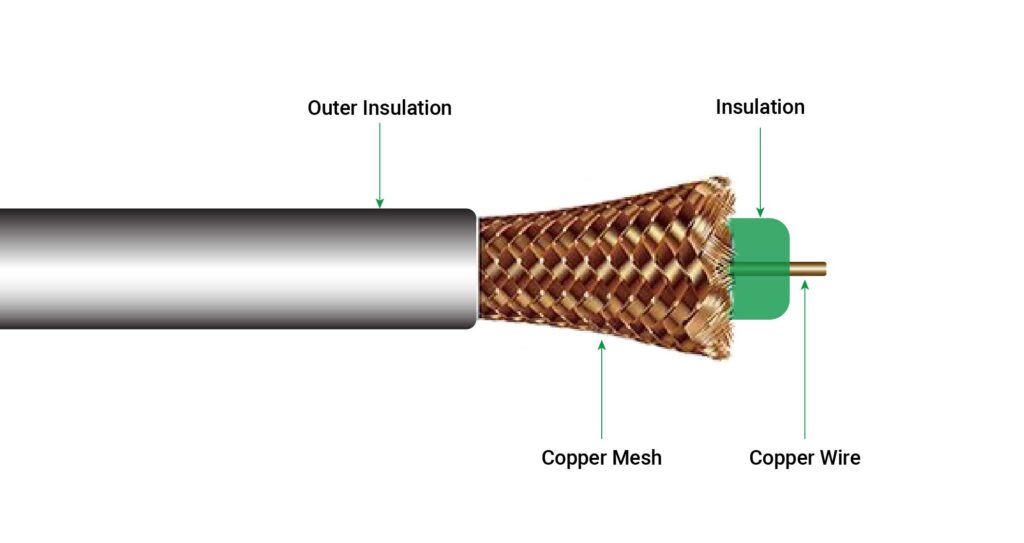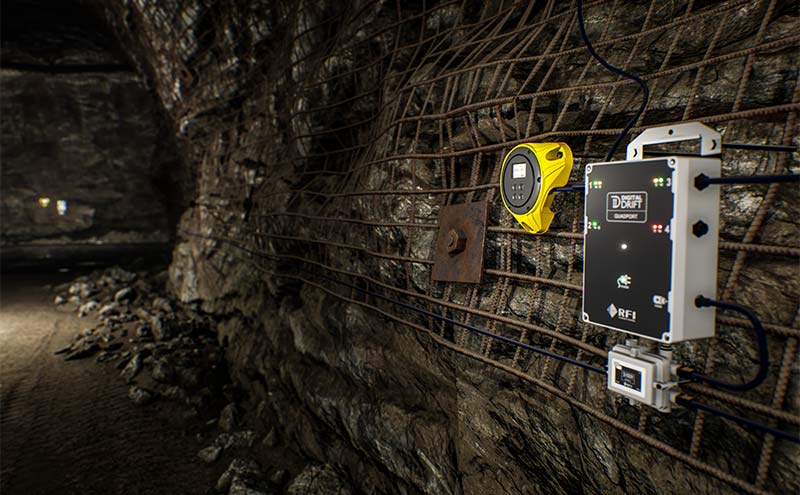Communications and connectivity underground is increasingly essential as industrial IoT makes its way into current and future projects. The real-time capabilities provide sites with valuable information to improve operations and safety.
Though the benefits are widely recognised, connecting systems underground comes with its own set of challenges. Whether retrofitting an established mine or installing a system on a new project, transferring power and data can be a daunting task.
Market-ready products used to build underground connectivity are fibre, coaxial cable, leaky feeder.
How are Fibre, Coaxial Cable, and Leaky Feeder cables different?
The needs and capacity of a site or project influence the feasibility of a network. The below table summarises critical aspects to help understand the differences between each cable.
Table 1: General Overview of Underground Network Cable Types: Fibre, Coaxial Cable, Leaky Feeder
| Fibre-Optics | GuardIAN Connect PoE Coaxial Cable | Leaky Feeder | |
| Cost | $$ | $ | $ |
| Data Transfer Method | Pulses of Light | Copper Wire | Radiating Copper Cable |
| Ease of Extension | Low. Skilled technician required. | High. Completed by on-site or external technician. | High. Completed by on-site or external technician. |
| Ease of Installation | Low. Skilled technician required. | High. Completed by on-site technician. | High. Completed by on-site technician. |
| Carries Data | Yes | Yes | Yes |
| Carries Power | No | Yes | No |
| Physical Strength | Flexible. Prone to stress. Protection recommended | Robust. Dual insulation. | Robust. Single insulation. |
| Integration Capabilities | CAT6 | Fibre, CAT6 | Radiating Copper Cable, CAT6 |
| Speed | High | Medium/ High | Low |
| Latency | Low | Low | High |
| Intrinsically Safe | Yes | No | No |
What is Coaxial Cable (Coax)?
Coaxial cable (coax) is more commonly used in households to connect TVs and paid subscription boxes, carrying video, audio and data.
Its rise in popularity in underground mines and tunnelling projects has come about due to its robust structure, economic advantages and ability to enable Power over Ethernet (PoE).
The physical attributes of coax cable make it ideal for the rugged conditions of underground environments. A shielded exterior protects the internal wire from damage and allows the transfer of data without interference.
Generally, a coax cable consists of four key elements:
- External insulation
- Copper mesh
- Internal insulation
- Copper wire
The coaxial term is used due to the fact that the outer shield and the inner conductor share a geometric axis.

What is Power over Ethernet?
Power over Ethernet is a connectivity feature which transfers electrical power and data across a single cable. The dual capability reduces the number of cables required in a working area.
It is ideal for underground environments as it powers devices in areas where it is otherwise impractical to do so. For example, PoE devices in underground environments include wireless access points, IP cameras, VoIP phones, lighting, refuge chamber and gas monitors.
PoE is defined by the Institute of Electrical and Electronics Engineers (IEEE) 802.3af, 802.3at and 802.3bt standards.
- Type 1 PoE (802.3af): 15.4W of power to the Ethernet port to be sent = 12.95W of delivered power at 100M distance from the switch.
- Type 2 PoE+ (802.3at): 30W of power to the Ethernet port to be sent = 25.5W of delivered power at 100M distance from the switch.
- Type 3 and 4 PoE++ (802.3bt): 60W (Type 3) or 90W (Type 4) of power not only to the Ethernet port to be sent, but to the device (if the cable length is known) at 100M distance from the switch. Minimum delivered power at 100M is 51W (Type 3) and 71W (Type 4) respectively.
The Infrastructure of Underground Coaxial Communication Networks
The communication infrastructure comprises several parts to complete the network. Nodes enable point to multipoint capabilities, each of which has four PoE+ ports and provide power to endpoint devices, such as security cameras and gas detectors or wireless access points.
Benefits of Coaxial Cable for Underground Connectivity
Sites are more digital-focused and data-centric, relying on real-time information to safely operate. This is why networks in underground mines and tunnel projects rapidly transfer from a nice-to-have to a necessary feature.
The tumultuous nature of underground operations is the very reason deep connectivity and reliable underground infrastructure is crucial. Monitoring critical processes and assets located beneath the surface is difficult with limited visibility.
Coax cable provides the supporting infrastructure for real-time DC power and Ethernet transfer. The design makes it ideal for rugged environments. High frequency, shielded cables enable communications to weak signal areas and carry signals at a greater distance.
Power over Ethernet enabled coaxial cable is increasingly being adopted due to its ability to;
- Remove the need for additional power sources; reducing installation and maintenance
- Be maintained and extended by on-site crews without specialised training
- Less susceptible to breakage due to robust structure
- Interface with existing underground networks such as fibre
The point to multipoint applications of coax cable, feeds devices and sensor technology across several areas, including health and safety, geotechnical, ventilation, borehole, and asset condition.
Facilitating the use of IoT devices such as sensors and cameras across an underground network provides practical insights to operators above ground. Actionable intelligence feeding back across the system enhances productivity and safety as well as reducing cost and wastage. Factual data is applied in real-time, prompted by push notifications and alerts. Additionally, historical data identifying trends is applied to ongoing planning and development.
Underground Network for Adaptability
Underground operations must be quicker to adapt to changing conditions, including shifting technology and the workforce. Connectivity and IoT are instrumental to mines and tunnelling, particularly as exploration goes deeper.
Network planning minimises business disruption. Information delays not only impact problem awareness; they delay the responsiveness of personnel and execution of a solution.
If you consider those sites who had established digital networks underground before the global coronavirus epidemic; they were better equipped to deal with the sudden changes – remote monitoring and analytics sharply reduced potential economic loss. In comparison, sites in full shutdown without the network infrastructure were unable to monitor the health of assets underground leading to slower restarts.
Improving underground operations and productivity has been a primary driver for acceptance of technology underground. The foreseen advantages of underground connectivity triggered its early adoption by larger companies.






